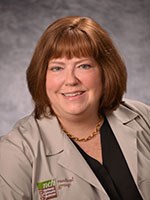Contagious hand-foot-and-mouth disease peaks in summer
May 22, 2019

Q & A with Michelle Rose, M.D., NCH Medical Group Pediatrician
What is hand-foot-and-mouth disease (HFMD)?
HFMD is a viral illness affecting children that presents with a couple of different features. Usually, you’ll see sores in the mouth and you’ll see lesions on the extremities like the hands and feet. Sometimes it’s on the buttocks, legs and arms. About 70 percent of kids will have both mouth and body lesions. Some will present with just one or the other.
Is it contagious?
It is a virus, so it’s contagious, usually by the fecal-oral route. It can be especially contagious in a daycare environment, which is why they have very strict diaper-changing policies. Caregivers must wash their hands in between changing. It’s spread through feces and through saliva and spread through the hands and feet. If somebody gets in touch with those open sores, the virus can spread that way, too.
How common is it?
It’s more common in the summer and early fall months. Most kids will come down with it once in their lifetime.
What causes it?
It’s caused by a class of viruses called enteroviruses. These viruses are more common to see in the summertime and in the early fall. The most common virus to cause HFMD is the Coxsackievirus.
Coxsackievirus A16 is the most common strain to cause this disease, but there are other enteroviruses that cause it; some can cause severe symptoms.
What are the symptoms?
You’ll see a rash inside the mouth and because of that, refusal to eat can be very common in little ones. If there’s a fever, it’s a low-grade fever. The other big symptom is skin lesions. Usually they’re not itchy or painful.
The rash inside the mouth looks like little red spots that become blisters and then ulcers. They’re on the tongue and inside the cheeks. The lesions on the hands and feet can be little red bumps that progress to little blisters and then they can open up and heal.
How long does it last?
7 to 10 days
What age group does HFMD affect?
It’s most common in children under age 5, but all age groups can come down with it. Even adults can contract it.
When should you bring your child to the pediatrician?
As with any rash, if you’re not sure what it is, you probably should bring your child to the doctor to identify it. If you do know that it’s HFMD and your child is not drinking, there is a risk of dehydration. If the lesions are looking like they’re getting infected, your child may need antibiotics. There are other complications that can be serious, such as unusual neurological problems like aseptic meningitis, encephalitis or acute paralysis. If there’s vomiting, irritability or seizures, you should call your doctor right away.
What is the treatment?
If there are any infected lesions, antibiotics would be prescribed. Other than that, you may give a fever medication such as acetaminophen if there’s a low-grade fever. You should make sure your child is comfortable and that he or she is drinking enough fluids. After 7 to 10 days, the lesions should go away.
Giving cold things like popsicles will help numb the mouth sores, and using a straw to direct the liquid down the throat and not hit the rash is helpful. With little ones, spoonfuls of soft food like applesauce can be given. And these things can help keep a child hydrated.
What are the risk factors for HFMD?
I would say a child in a daycare setting is at risk since it’s the most common place for these types of infections to spread or in any area where there are a lot of kids together in one place. The other risk factor is just the season – the summertime. There isn’t any one type of race or nationality that is more susceptible to this virus.
How can you avoid it?
The most common way to avoid HFMD is good hand washing, cleaning the toys and the areas where kids who have had it have been playing because they can spread it through their hands. Make sure you’re using bleach wipes or good cleanser on the counters and on the toys, either in day care or in your own home where there’s a child who has it. The biggest thing is keeping everything clean and trying not to spread it from one person to another.
Dr. Rose practices at 135 N. Arlington Heights Road, Suite 152 in Buffalo Grove. Call 847-465-9600 to schedule an appointment.